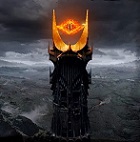ORIGINAL: morvael
Lovely to see Pavlov executed, like in history. Does not happen often in the game, as there are other candidates with low POL
IMHO the second map is a bit more readable, but this may have to do with clear terrain underneath, rather than opacity settings. Other than that I can't spot many differences.
The shift to the north and center from Ukraine is very visible. Nothing can be helped that LG and Moscow is a priority target in 1941.
Oddly, he seems to go in most of my games. I think its because I leave a number of the weaker commanders in place up to about T6 so they can absorb all the inevitable easy victories the Germans will score (and especially for Western Front there is nothing your command chain can do in any case).
Vigabrand has done a good job eating up SW Front. Its down to the equivalent of just over 2 armies already (26 is sitting empty in the rear), at some stage I'm going to have to send fresh units to this sector but at the moment I'm worried at what is building up around Leningrad
ORIGINAL: Gabriel B.
Under the old airgroup creation rules ,the game you are playing, would not be in your favour .
You have about 1 recon regiment per front (20 ac) versus 14 german aufklarung gruppe (36- 72 aircraft )
+ 4 allied recon groups .
Must confess my only point of comparison is the game against SigUp, at the end we both were running out of recon assets, as sending them into areas where we were engaged in our fighter wars was near suicide. I was back to relying on R-5s ... of course now I'd simply raise as many as I could (given all the other demands on admin pts).
I do really like the air systems for 1.08.02/3. Its just so much easier to ensure that your elite formations have the most modern planes while new squadrons tend to get the second line equipment
ORIGINAL: 821Bobo
ORIGINAL: loki100
...and Konev being transferred from the Caucasus to take control of the freshly raised Reserve Front.
Konev needs to be promoted. Did he not lost any of his valuable stats? I am usually leaving Konev at Caucasus MD as I won't risk it.
I got away with it this time, I find his particular set of stats really fits what I want Reserve Front to do at this stage of the war so it seems a good gamble. Also the chance of finding an army command that might allow him to gain a few wins is a real challenge ... here the no +1 comes into play again. It used to be feasible to build a couple of armies that were useable for sustained counterattacks esp around Moscow and use those to gain rank for selected generals.









































